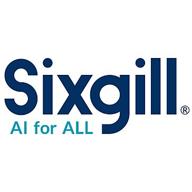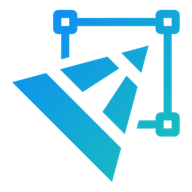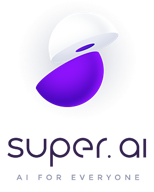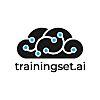Data Labeling
Unlocking the Potential: Efficient Data Annotation Techniques for Machine Learning
Machine learning algorithms are rapidly advancing, revolutionizing industries and transforming the way we interact with technology. At the heart of these algorithms lies the crucial process of data annotation. By accurately labeling datasets, machine learning models can learn and make intelligent predictions. In this article, we delve into the realm of efficient data annotation techniques for machine learning, exploring the concepts of semantic data labeling for artificial intelligence and specialized data labeling solutions for AI algorithms.
Understanding Semantic Data Labeling for Artificial Intelligence
Semantic data labeling is a powerful technique employed in the field of artificial intelligence. Unlike traditional labeling methods that focus solely on categorizing data, semantic data labeling provides a deeper level of understanding. It involves labeling data not only with descriptive tags but also with contextual information and relationships. By incorporating semantic labeling, AI algorithms can interpret data in a more nuanced manner, resulting in improved accuracy and more meaningful insights.
The Role of Specialized Data Labeling Solutions for AI Algorithms
As the demand for data labeling in machine learning grows, so does the need for specialized solutions tailored to the unique requirements of AI algorithms. These solutions employ advanced techniques and tools that streamline the annotation process, ensuring efficiency and accuracy. Specialized data labeling platforms leverage automation, crowd-sourcing, and human-in-the-loop approaches to optimize the labeling workflow. By harnessing the power of these solutions, organizations can significantly reduce the time and resources required for data annotation, allowing them to focus on the core development of their AI models.
The Key Components of Efficient Data Annotation Techniques
Efficient data annotation techniques encompass a range of strategies and methodologies aimed at maximizing the productivity and quality of the annotation process. Firstly, automated annotation techniques, such as computer vision algorithms, can rapidly label large volumes of data, reducing the burden on human annotators. Secondly, active learning approaches identify the most informative data samples for annotation, optimizing the annotation efforts. Furthermore, iterative annotation processes allow for continuous improvement and refinement of the data labels, enabling the AI model to evolve and adapt over time.
Ensuring Quality and Consistency in Data Annotation
While efficiency is essential, maintaining quality and consistency in data annotation is paramount. To achieve this, it is crucial to establish clear annotation guidelines and standards. These guidelines ensure that annotators follow consistent labeling conventions, reducing ambiguity and improving the overall quality of labeled datasets. Quality control mechanisms, such as inter-annotator agreement checks and iterative feedback loops, play a vital role in minimizing errors and discrepancies, resulting in more reliable machine learning models.
Conclusion
Efficient data annotation techniques are fundamental to the success of machine learning applications. By embracing semantic data labeling for artificial intelligence and leveraging specialized data labeling solutions, organizations can unlock the full potential of their AI algorithms. With a focus on automation, active learning, and continuous improvement, efficient data annotation techniques enable organizations to scale their AI initiatives, drive innovation, and make accurate predictions in an ever-evolving digital landscape.


3 Review
Accelerate the development of your AI solutions with our complete labeling toolset built for speed and ease for dataset creation. Available with Sense for integrated model training or as a standalone application, HyperLabel helps machine learning teams iterate quickly and easily.


3 Review
The Universal Data Tool is a web/desktop app for editing and annotating images, text, audio, documents and to view and edit any data defined in the extensible .udt.json and .udt.csv standard. Collaborate with others in real time, easily train labelers, integrate into your applications. Perform Image Segmentation, Image Classification, Audio Transcription…
Read more about this company

3 Review
LinkedAI ML models pre-label the data to remarkably reduce the cost and the time required to annotate your data.


3 Review
Today's challenge to train machine learning models is not to get the data itself - but to get the clean labelled data - to avoid having a "garbage in garbage out" loop. While current digital transformation by AI is powered by machine learning models, this process of data annotation becomes critical. Kili Technology serves as the training data solution…
Read more about this company

2 Review
Clarifai offers an end-to-end AI lifecycle platform for deep learning and unstructured data that transforms unstructured images, video, and text into structured data, significantly faster and more accurately than humans would be able to do on their own. Clarifai has won numerous awards and is recognized by Forrester as a leader in computer vision…
Read more about this company

2 Review
Supervisely Enterprise is fully self-hosted and cloud frendly: install it on your servers or in the cloud, keep everything private. We provide API, SDK and backend source codes. So it is highly customizable and can be integrated into any technology stack.


2 Review
Labeling AI is a deep learning-based technology that automatically labels large amounts of data based on a small amount of pre-labeled data available. Labeling AI is an innovative tool that can save your time. Auto labeling performs the labeling process of large datasets with minimal human intervention, required only to review the auto labeled data…
Read more about this company

2 Review
Super AI Compiler uses AI + Humans to generate, structure, and label any type of data.


2 Review
Innotescus is a collaborative video and image annotation platform built to streamline Computer Vision development processes via seamless data handling, smart annotation tools, and intuitive collaboration features. Additionally, its data visualization tools and cross-functional collaboration features identify data bias early, improve data accuracy, and…
Read more about this company

2 Review
Lionbridge partners with brands to break barriers and build bridges all over the world. For more than 20 years, we have helped companies connect with global customers by delivering marketing, testing and globalization services in more than 300 languages.


2 Review
The ShaipCloudTM AI data platform simplifies workflow, reduces the friction of working with a distributed global workforce, provides greater visibility, real-time quality control, and seamless collaboration with all major cloud providers. There are data platforms. Then there are AI data platforms. We’re the latter because the secure ShaipCloudTM human-in…
Read more about this company

2 Review
91% of teams take > 3 weeks to create their first dataset. And months to get to Beta. Here's why: The process of creating datasets gets blocked by default. Teams create many sets. This is because the needed abstractions (such as various Templates) only become known through an iterative process. With Diffgram, your Data Science team moves into a higher…
Read more about this company

2 Review
Alegion's managed service accelerates enterprise AI initiatives by validating, labeling, and annotating training data.


2 Review
Enterprise-grade data platform for vision AI. Dataloop is a one-stop shop for building and deploying powerful computer vision pipelines data labeling, automating data ops, customizing production pipelines and weaving the human-in-the-loop for data validation. Our vision is to make machine learning-based systems accessible, affordable and scalable for all…
Read more about this company

2 Review
Datasaur offers the most intuitive interface for all your Natural Language Processing related tasks.


2 Review
The complete solution for your computer vision products. The end-to-end platform to annotate, train and automate your computer vision pipeline.


2 Review
Trainingset.ai Platform receive your instructions and data via API call, Dashboard form or CSV upload, then your annotators in conjunction with our annotation & smart tools, AI and a Quality Assurance process, will help your annotators to resolve the task accurately in a very short time frame by, for example, annotating, labeling or categorizing your…
Read more about this company

2 Review
DefinedCrowd offers an intelligent data infrastructure for AI that provides high-quality training data to help machine learning oriented products reach market quicker and with better quality. It offers efficient data workflows that enable data scientists to collect, synthesize, enrich and structure training data by combining human intelligence and…
Read more about this company

2 Review
At TrainingData.io, we build tools for ML/AI engineers. Marketplace for Validation Training Data for AI/ML Models.

2 Review
The BasicAI platform enables annotation of most types of unstructured data for a wide variety of industry applications and use cases.
- Efficient data annotation techniques for machine learning encompass strategies such as automated annotation using computer vision algorithms, active learning approaches, and iterative annotation processes. These techniques aim to maximize productivity and quality, enabling faster and more accurate labeling of large datasets.
- Semantic data labeling provides a deeper level of understanding to AI algorithms. It involves labeling data not only with descriptive tags but also with contextual information and relationships. By incorporating semantic labeling, AI algorithms can interpret data in a more nuanced manner, leading to improved accuracy and more meaningful insights.
- Specialized data labeling solutions are tailored to the unique requirements of AI algorithms. They leverage automation, crowd-sourcing, and human-in-the-loop approaches to streamline the annotation process. These solutions optimize efficiency and accuracy, allowing organizations to reduce the time and resources required for data annotation while focusing on AI model development.
- Quality and consistency in data annotation can be ensured through the establishment of clear annotation guidelines and standards. These guidelines help annotators follow consistent labeling conventions, reducing ambiguity and improving the overall quality of labeled datasets. Quality control mechanisms, such as inter-annotator agreement checks and iterative feedback loops, play a vital role in minimizing errors and discrepancies.

